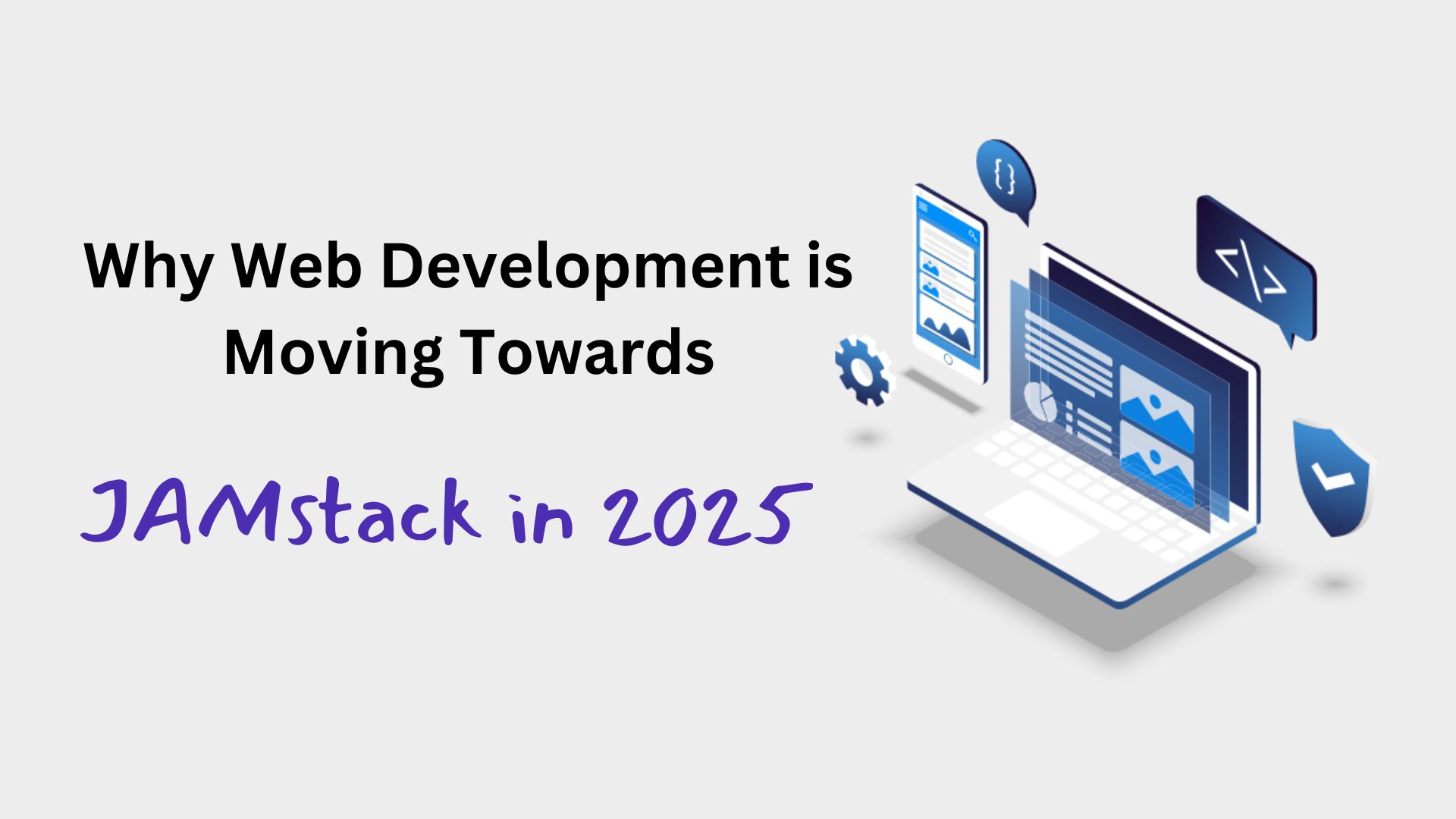Why Web Development is Moving Towards JAMstack in 2025
 Sanjeet Singh
Sanjeet Singh
In recent years, web development has rapidly evolved. From static websites to dynamic web apps, developers have consistently sought faster and more efficient ways to deliver content and enhance user experiences. One of the most significant shifts in modern web development is the growing popularity of JAMstack, a web architecture that is quickly becoming the preferred solution for building high-performance websites and web apps.
But what exactly is JAMstack, and why is it gaining so much attention? Let’s explore the details.
What is JAMstack?
JAMstack stands for JavaScript, APIs, and Markup. It is a modern web development architecture that focuses on pre-rendering static content and enriching it with dynamic features powered by JavaScript and third-party APIs. The core idea behind JAMstack is to decouple the frontend from the backend, which allows websites to be faster, more secure, and easier to scale.
JavaScript: The dynamic component of the architecture. JavaScript is used to add interactivity and manage client-side logic.
APIs: The backbone of JAMstack. APIs allow the website to pull data, interact with databases, or perform backend operations without relying on a traditional server-side backend.
Markup: Refers to pre-built static HTML files that are generated at build time. These files can be served directly from a CDN, ensuring faster loading times.
Why is JAMstack Gaining Popularity?
Several key factors contribute to the growing adoption of JAMstack. Here are some of the most compelling reasons why web development is moving toward this architecture in 2025.
Performance at its Core
One of the main reasons developers are moving to JAMstack is the significant performance boost it offers. With traditional server-side rendering, each time a user visits a page, the server must generate the HTML, process the data, and send it back to the browser. This can slow down the website, especially during periods of high traffic.
Scalability and Flexibility
JAMstack is inherently more scalable than traditional server-based architecture. By relying on pre-rendered content and APIs, there is no need to handle complex server requests or manage a traditional database for each user. Websites built with JAMstack can scale easily, even during periods of high traffic.
Security Benefits
Security is a top priority for web developers, and JAMstack provides a more secure approach to building websites. Traditional web apps often rely on a server to handle requests and manage databases, which can be vulnerable to attacks. JAMstack mitigates many of these risks by decoupling the front end from the back end.
Simplified Development Workflow
Developers are also drawn to JAMstack due to its streamlined development process. With JAMstack, you can focus on creating a static frontend and integrate third-party APIs for dynamic functionality. This simplifies the workflow by allowing developers to use pre-existing tools and services, eliminating the need to build complex backend logic from scratch.
Cost-Effectiveness
Building a website with JAMstack can be more cost-effective than traditional server-based approaches. Since there is no need to maintain or manage a backend server, you save on server costs and ongoing maintenance. Moreover, because JAMstack relies on static content and CDNs, hosting requirements are minimal, and scaling the website is generally much cheaper.
Better Developer Experience
Developers are attracted to JAMstack because it improves the overall development experience. JAMstack allows developers to focus on frontend development and user interface design while third-party APIs handle the backend tasks. This reduces the complexity of backend infrastructure, allowing developers to focus more on the parts of the site that users interact with.
Improved SEO
Speed is crucial for SEO, and JAMstack websites have an inherent advantage in this area. Faster websites rank better in search engines because they deliver a superior user experience. With JAMstack’s static content and CDN delivery, pages load almost instantly, improving both user satisfaction and SEO rankings.
Conclusion
JAMstack is revolutionizing the way developers build websites and web applications. Its focus on performance, scalability, security, and simplicity makes it an ideal choice for modern web development. As we move into 2025, more businesses and developers are recognizing the benefits of JAMstack and adopting it as their preferred architecture.
Whether you're creating a personal blog, an e-commerce site, or a large-scale application, JAMstack provides a powerful solution for delivering high-performance websites and enhancing user experiences. For those seeking to build expertise, enrolling in a full-stack developer course in Noida, Delhi, Mumbai, or other parts of India is an excellent way to learn and apply the latest web development techniques.
Subscribe to my newsletter
Read articles from Sanjeet Singh directly inside your inbox. Subscribe to the newsletter, and don't miss out.
Written by

Sanjeet Singh
Sanjeet Singh
I am Sanjeet Singh, an IT professional with experience in the IT sector. I have a broad understanding of Data Analytics and proficiency across multiple layers of software development and testing, from the front end to the back end.